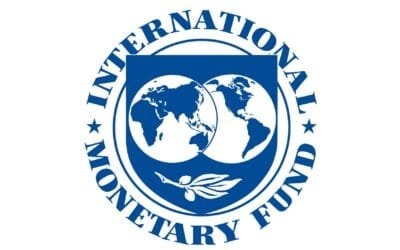Alan Greenspan was Federal Reserve chairman for 18½ years — longer than the reigns of nearly half the kings and queens of England. A few years ago he was “knighted” by England’s current monarch. For years he was deified by economists and Wall Street strategists. The so-called “maestro” purportedly “orchestrated” all the good that occurred and valiantly muted financial crises. This tall tale is utter nonsense. Greenspan’s policies, in fact, caused many of those crises.
Greenspan’s few critics lambasted him for the wrong reason, claiming he improperly “allowed” U.S. stock prices to “rise too much” in the 1990s – or “allowed” house prices to “rise too much” in recent years. In fact, his truly improper behavior entailed enviously smashing such wealth gains with rate hikes and inverted yield curves. His last act on his last day in office last month was to raise rates yet again and invert the yield curve – historically, a leading indicator of recession.
Greenspan left no “legacy” that could be defined, other than this: he established as a norm the vicious pattern whereby the Fed chairman is deemed worthy of speaking on every topic under the sun, of monitoring every possible variable (hence none) and of doing whatever he wishes, free of oversight. There was no “Greenspan Standard” – and this was the great failure of his reign. Given his knowledge, Greenspan knew better than to leave the U.S. dollar in a standard-less state.
There’s only one reason a central planner does whatever he wishes, willfully obfuscates his aims, deliberately deceives questioners and operates unaccountably: because he’s a power-luster. That was Greenspan – and that’s why he was so idolized by Wall Street, academicians and politicians. The idolatry only emboldened him to wield still more power than he already possessed when he began. Intellectual independence vanished under Greenspan’s reign. If he decried investors for “irrational exuberance,” so did all the trained seals at the Fed, in Congress, the media and Wall Street. If he blamed crashing markets on executives’ “infectious greed” the same trained seals dutifully concurred. If he declared bond-yield trends to be a “conundrum,” the seals said likewise. When he left the Fed denying that an inverted yield curve would spell trouble “this time,” the seals nodded in unison. They’ve been trained by university economists to believe central bankers are god-like planners. Forget the collapse of the U.S.S.R. – allegiance to central planning lives on in academia, the Fed and Wall Street.
Greenspan’s track record (August 1987-January 2006) looks favorable only compared to the pathetic performance of his immediate predecessors – i.e., to that seen in the 18½-year period spanning March 1969 to July 1987. His performance pales in comparison to that delivered in the 18½ years before that (August 1950 to February 1969), when we had Fed officials who today no one can remember by name – because they operated not according to power-lusting whim but under an objective monetary standard: the gold standard. True, it was the Bretton Woods gold-exchange standard, not a true gold standard, but it was superior to the mélange of policies adopted by Greenspan and his immediate predecessors. Under the gold-exchange standard Fed chairman weren’t household names because they delivered few speeches, rarely testified, changed interest rates infrequently and exercised far less power. Their only real job was to issue a gold-convertible dollar.
In a recent study, my firm compared these distinct, 18½-year eras: 1) the Greenspan-led Fed (1987-2006), 2) the non-Greenspan Fed (1969-1987) and 3) the gold-based Fed (1950-1969). Whether measuring the U.S. economic growth rate, inflation, interest rates, commodity prices, real wages, productivity, unemployment or equities, we found that U.S. economic-financial performance under the Greenspan Fed was less-bad than it was under the non-Greenspan Fed, but performance was spectacular and superior under the gold-based Fed compared to each of the others. The S&P 500 gained an average of 21.8% p.a. in real terms under the gold-based Fed versus a loss of -0.7% p.a. under the non-Greenspan Fed and a rise of just 12.9% p.a. under Greenspan. U.S. output grew 6.9% a year under the gold-based Fed, compared to 2.8% under the non-Greenspan Fed and 3.7% under the Greenspan Fed. Under Greenspan the U.S. CPI rate averaged 4.0% a year, down from 11.8% per year under the non-Greenspan Fed, but not nearly as low as the 2.6% annual rate seen under the gold-based Fed. The Fed Funds rate and 30-year mortgage rate averaged 4.81% and 7.89% per year under Greenspan – lower than the 8.58% and 10.65% rates witnessed in the immediately-preceding era, but not nearly as low as the 2.91% and 4.60% rates enjoyed under the gold-based Fed. Finally, under Greenspan the U.S. unemployment averaged 5.5%, productivity rose 2.8% p.a. and real wages advanced 1.4% p.a.; while better than the 1969-1987 era – when the jobless rate averaged 6.8%, productivity grew 1.4% p.a. and real wages gained just 1.2% p.a. – the gold-based era outperformed yet again, with an average jobless rate of just 4.7%, annual productivity gains of 3.3% and average real wage gains of 3.4% p.a..
Given the evidence, it’s scandalous that economists today, aping the views of professors and Fed officials, continue to insist that fast economic growth and low unemployment rates “cause” higher inflation. In fact, there’s an inverse relationship between inflation and growth. The 1969-1987 period saw “stagflation” – a lethal combination of low growth, high inflation and widespread joblessness which curbed stock gains – while the gold-based era saw fast growth, low inflation and interest rates and low joblessness – which brought healthy stock gains. The Greenspan era fell between these extremes. But in today’s world facts are blithely evaded – or damned. Ask any economist: “Do you have more respect for Greenspan or the gold standard?” They’d answer: “Greenspan, of course.” Then they’d deride gold as a “barbarous relic,” echoing their other big hero – John Maynard Keynes. A U.S. Senator recently called Greenspan “the greatest central banker who ever lived.” In truth that appellation belongs to the gold standard – precisely because it tied the hands of central bankers.
It’s ironic that the gold-based U.S. monetary system of the 1950s and 1960s beats the Greenspan Fed hands down, for during that era Greenspan became an eloquent, clear and knowledgeable proponent of the gold standard and free banking – that is, no central banking whatsoever.[1] He knew better than most the virtues of the gold standard and the dangers of central banking – especially arbitrary central banking. Yet he conducted policy arbitrarily. He made no attempt to move the Fed back to a gold-based system, even though he had accumulated the political (and persuasive) power to do so and knew the practical details necessary to achieve it.[2] When the time became politically propitious for a move to gold – when President Reagan proposed a return to a gold-based dollar in the early 1980s – Greenspan joined with Milton Friedman to scare him out of it, warning that the U.S. might lose its gold stock (true only if the “re-entry” exchange rate between gold and the dollar was set too low). A return to gold, he said, was possible only when the Fed improved its policies to the point where it “replicated” the performance seen under the gold standard. Such performance certainly was not “replicated” under Greenspan; conveniently, then, he could always cling to his lame excuse for never moving the U.S. dollar back to gold.
Back when times were relative prosperous under Greenspan (mid-1999) – when he should have quit while he was ahead – an editorialist for The New York Times wrote an op-ed piece titled “Who Needs Gold When We Have Greenspan?”[3] He noted, correctly, that the gold price had been declining for many years (to below $300/ounce), that both inflation and unemployment rates were low and falling, while the U.S. economy and stocks were rising robustly. All true. But the editorialist took that to mean Greenspan was far better as a “standard” for the dollar than the gold standard ever was or could be. How wrong he was. That same month (May 1999) Greenspan was hatching his plot to raise the Fed Funds rate, invert the yield curve, smash stock prices and push the U.S. into recession – to slay “irrational exuberance” and force everyone else to live by his preferred sentiments: dour pessimism and malevolence. Ignoring the message from gold, Greenspan helped destroy trillions of dollars of business wealth. And now the gold price is twice as high as it was then, while U.S. stock prices remain lower and the yield curve is again inverted – signaling yet more trouble in 2006-2007.
In a farewell cocktail party at the Fed on his last day Greenspan sanctimoniously told his colleagues: “We are in charge of the nation’s currency. The central bank, because of that, is involved in everyone’s daily lives. We are the guardians of their purchasing power.” By then Greenspan had entirely lost his honesty and integrity – if not also his mind. This was the man universally acclaimed for his astute knowledge of the data. Yet during his tenure the U.S. Consumer Price Index rose from 114 to 198. The reciprocals of these numbers provide a rough measure of the dollar’s power to purchase a representative basket of goods. Fact: the dollar’s purchasing power declined 43% on Greenspan’s watch. No such thing ever happened under the gold standard. Why did he never mention this? No central banker – least of all Alan Greenspan – has ever served as the “guardian” of the purchasing power of the currency he issues. He’s the proverbial fox guarding the henhouse.
Only gold can preserve a currency’s value. Greenspan’s track record at the Fed was nowhere near as good as gold’s – because the dollar itself wasn’t as good as gold under Greenspan. He made sure of that. He refused to foreswear policy arbitrariness; instead, he reveled in it – and in the encomiums. That he never lifted a finger to restore a gold-based dollar, let alone a gold-based monetary policy – despite knowledge of its virtues – was his main vice. The question we should be asking today is the reverse of the one posed by The New York Times editorialist: “Who Needs Greenspan (or Bernanke) When We have Gold?”
Download a copy of Mr. Salsman’s report at his website: http://www.intermarketforecasting.com/
[1] Alan Greenspan, “Gold and Economic Freedom,” in Ayn Rand, Capitalism: The Unknown Ideal (New American Library, 1966).
[2] Alan Greenspan, “Can the U.S. Return to a Gold Standard?” The Wall Street Journal, September 1, 1981.
[3] Floyd Norris, “Who Needs Gold When We Have Greenspan?” The New York Times, May 4, 1999, p. A30.









